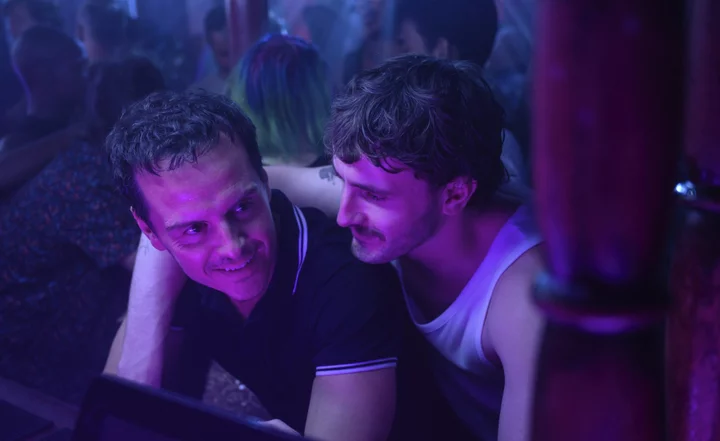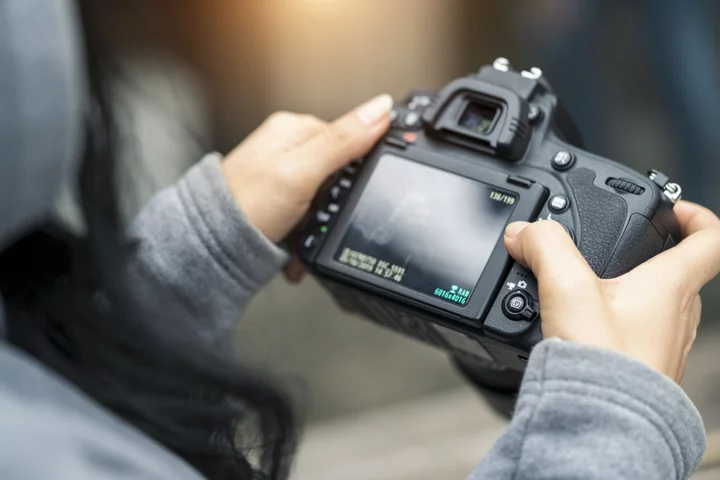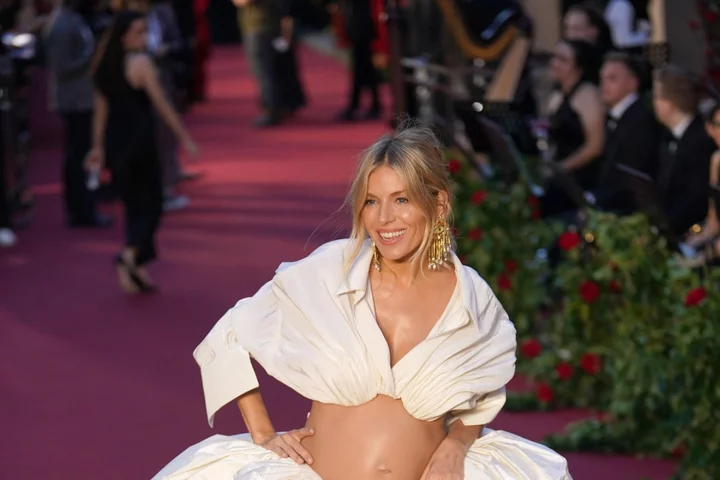A film of tremendous emotional weight and splendid cinematic textures, Andrew Haigh’s eerie romantic drama All of Us Strangers is a personal, painful trip through time. A story of regrets and intimate fantasies, it stars powerhouse Irish actors Andrew Scott and Paul Mescal as Adam and Harry, a pair of queer English neighbors in metropolitan London, whose gentle romance goes hand-in-hand with vulnerable confessions and tales of familial regret. The film comes staggeringly close to being a masterpiece, except for an off-kilter conclusion that doesn’t quite fit the preceding drama.
Despite its deflating ending, Haigh’s movie is immensely self-assured in everything it sets out to achieve. Its plot, which involves Adam traveling back and forth between London and his small hometown, piques curiosity with its winding shots of his return to the sprawling suburban settings of his youth. As he revisits these places from his past, he befriends a couple slightly younger than he, played by Jamie Bell and Claire Foy, whose odd behavior toward him quickly becomes an uncanny comfort at a time when opening himself up to Harry, physically and emotionally, feels like a terrifying proposition.
What is All of Us Strangers about?
Based on the 1987 Japanese ghost story Strangers by Yamada Taichi, All of Us Strangers circumvents some of the story’s horror elements (which were a major focus of filmmaker Nobuhiko Obayashi's 1988 adaptation, The Discarnates). This isn’t to say that Haigh discards major elements of the novel, but rather, that his approach to the source material transforms their meaning, as he probes the hold that grief and wistful memories have over Adam, a screenwriter struggling to write about his parents some 30 years after their deaths.
Haigh’s version of the story is steeped in subtle surrealism, on which he quickly and confidently pulls back the curtain. He reveals, almost entirely up-front, everything unfolding beneath the surface — much of which is revealed in the trailer, too — allowing for a story less concerned with sleight of hand (for the most part), and more focused on visual, aural, and emotional allure, as Haigh puts words and images to long-buried emotions, and finds cinematic expressions for the often-inexpressible. It’s moving and stirring, despite the ways it walks back some of its enormous emotional achievements by the end.
A trip to Adam’s hometown leads to him encountering Bell’s married, middle-aged character, a nameless man who seems to know Adam and invites him home. Bell and Foy — playing a couple whose behavior and attire are distinctly anachronistic — refer to Adam as their son, despite him being slightly older than them, as the film quickly reveals itself to be a ghost story of sorts, involving frequent trips down an almost-literal memory lane.
Back in London, the “real world,” as it were, things are just as eerily sketched. Adam lives in a brand new apartment complex, where his only neighbor is the young and mysterious Harry, whose drunken flirtations he initially rebuffs before eventually letting him inside to share a drink. As Adam begins splitting time between his new beau and the spectral visions he either sees or imagines in his childhood home, he’s forced to confront the past while imagining a version of the present that could not possibly be — including the difficult task of coming out to versions of his mother and father who are trapped in amber in the late 1980s. It’s as if Adam’s imagination were walking a fine and tragic line, conjuring the best and worst parts not only of who they were, but who they would never get to be.
Haigh, who’s about the same age as Adam, pours his personal experience into this adaptation (in which he replaces the book’s heterosexual couple with two queer men, with Yamada’s blessing). In the process, he collapses the evolution of modern queerness and gay history during fraught periods like the AIDS crisis into a series of riveting interpersonal exchanges, whether between Adam and his parents — whose acceptance of him is loving, but begrudging — or between him and Harry, a younger millennial whose conception of (and relationship to) queerness and same-sex marriage doesn’t come laced with nearly the same fear and shame as his own.
However, this political purview is all a subtext whose main function is to introduce dramatic disconnects between Adam and the people around him. His experience is hardly unique to him, but it’s no less isolating, leaving him estranged from not only others, but also himself. Haigh allows this piercing loneliness to radiate outward in every scene, using cinematic flourishes that turn All of Us Strangers into one of the most enrapturing films this year.
Andrew Haigh fills All of Us Strangers with wonderful cinematic flourishes.
From its opening frames, All of Us Strangers is a visual marvel. A sunrise in the distance, reflected in an apartment window, casts an orange glow over Adam, who appears too weary and exhausted to fully appreciate its beauty. This is, in essence, the film’s story in microcosm, one in which the complications caused by three decades of grief, unresolved and unconfronted, have closed Adam off to the idea of loving, and living, in the present.
While Adam’s nostalgia is undoubtedly a form of poison — something Yamada’s novel and Obayashi’s The Discarnates make all but literal — his trips to his childhood home are sketched with palpable, breathtaking beauty. His evenings spent in an idyllic version of the past (or one as idyllic as he’s able to imagine) radiate a sense of childhood comfort, of which he’d been robbed by happenstance three decades ago. The film’s color palette, courtesy of cinematographer Jamie D. Ramsay, is warm and dreamlike, turning each encounter between Adam and his mother, his father, or both of them together into gilded memories at a perpetual magic hour, as sunlight pouring in through each window both envelopes and illuminates.
But it isn’t just the time spent in this realm of memory that feels wistful and safe. The way Haigh portrays the temptation to travel to and enter this conception of the past is just as powerful. Each train ride Adam takes — each time he leaves the big city and its disappointments, returning to small-town simplicity — is strung together with rhythmic and intentional scene transitions in the form of lengthy cross-fades that emphasize not just time, but also feeling. Editor Jonathan Alberts ensures that every time images overlap, the effects are just as temporal as they are emotional, creating a sense of mood around each location Adam (re)visits. The longer each fade between close-ups and establishing shots lasts, the more it feels like overlapping images of Adam and his surroundings are being cemented rather than simply shown. This technique imbues the story with nostalgia as a feeling that’s hard to shake, rather than simply an idea being held to account, allowing Adam and the audience alike to slip slowly into the past as if it were a real place.
In the process, the movie’s central dramatic question becomes all the more pressing as its romantic relationship evolves: Does Adam let Harry into this pristine world of grief and memory’s he’s created for himself, in all its ugly and terrifying implications? Does he let himself be fully seen?
Andrew Scott and Paul Mescal deliver two of the year’s best performances.
Perhaps the movie’s biggest strength is its four central performances. They aren’t just tentpoles propping up its drama, but reflections of one another in beautiful, meaningful, and often devastating ways, anchored by Scott’s thoughtful moroseness as he searches for hints of fleeting respite wherever he can find it.
The exchanges between Adam and his parents, while wholly imaginary, betray a charming sense of realism in their delivery. They could just as easily take place between living people, following conversational ebbs and flows, and the specific, subdued frustrations emblematic of chats between kids and parents at a generational crossroads. Bell and Foy may be playing ghosts of the past, but even as manifestations of Adam’s memories, they’re fully-formed characters whose sense of difficult self-reflection holds a mirror up to the middle-aged screenwriter’s arrested development. They answer questions in ways he imagines they either truly would, or in ways he hopes they might have — an unsolvable emotional mystery he seems to constantly create, solve, and re-solve for himself in several scenes, even though it has no knowable answer. They are, after all, the product of his limited conception as a 12-year-old, upon whom he’s forced to project complete adult lives through the lens of his own experience and disappointment as an adult who hasn’t quite lived.
As Adam’s father, Bell navigates the character’s silent, stiff-upper-lip stoicism as if he were bursting at the seams, desperate to show some kind of emotion and connect with his long lost son. He is both as Adam remembers him, and as he hopes he could have been. As his mother, Foy is equally tragic and amusing, a woman whose dreams seldom match up with reality, and who deals with this disconnect through a prickly frankness. They are Adam’s best and worst qualities made manifest.
However, it’s the emotional space created by Scott and Mescal, as Adam and Harry, that allows the movie to sing. Their sexual dynamic, while initially hesitant, becomes pulsating and vulnerable, involving scenes of raw physical intimacy that verge on liberating. The more their walls come down — one tiny brick at a time, in an emotional tête-à-tête that sees both actors slowly welcome each other in silent, implicit embrace as they unfurl secrets with their eyes —the more it feels they get to know themselves.
Unfortunately, the movie also hinges on a last-minute reveal that puts the couple’s evolving relationship into a strange new context. It’s disappointing and deflating, not for the ways in which it’s surprising, but for how it ends up turning their romance into a retread of story ideas the film has already confronted. Having been dramatically lucid up to this point, the movie ends up relying on obfuscation — a repetition it can’t quite synthesize into something fully meaningful or profound, despite its wondrous visual approach.
But despite this last-minute swerve — which doubles down on existing setups, rather than providing the contrast of dramatic payoffs — All of Us Strangers remains a moving example of how cinema can fold tragedy and catharsis into one. It is, after all, a medium of ghosts reflected to us from the past, a notion which Haigh leans into without hesitation or apology. He breathes life into fantasies about the simple, the mundane, and even the unpleasant, through his phantasmic tale of a middle-aged man who wishes, more than anything, that he could have come out to his parents — and for whom loving, and being loved, involves the difficult act of letting go of that fantasy.
All of Us Strangers was reviewed out of the New York Film Festival. The film will be released in theaters Dec. 22.









